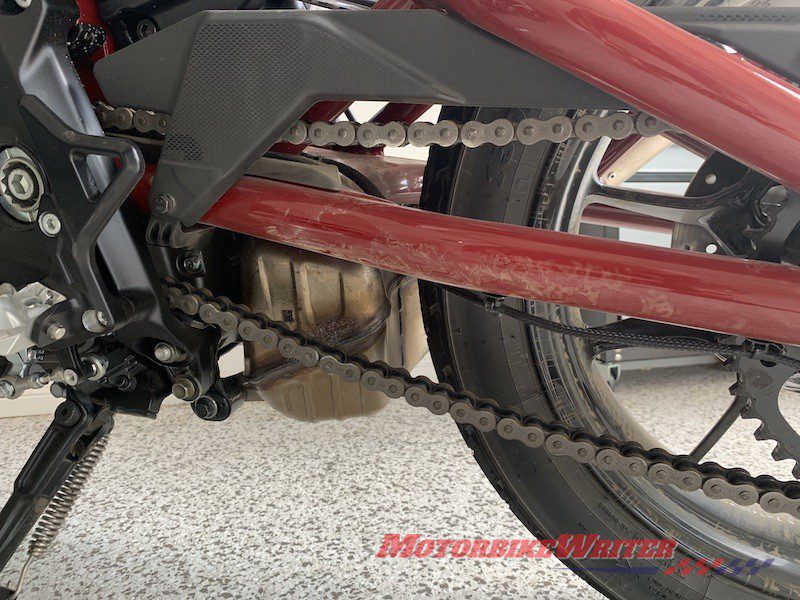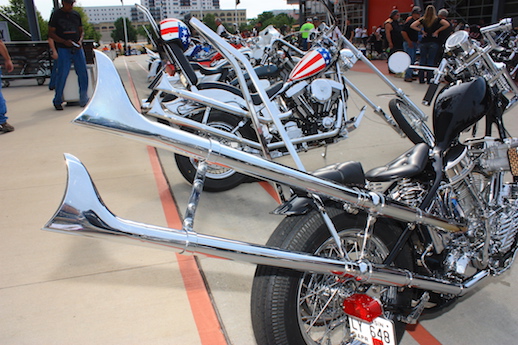Police are allegedly fining riders who remove the catalytic convertor or cat from their motorcycle, according to several motorcycle dealers.
While the replacement of the muffler or exhaust system may contravene noise rules, removing the cat has nothing to do with noise, but with air pollution.
The cat is that ugly metal box often underneath your motorcycle.
It burns red hot to reduce toxic gases and the size of pollutants in the exhaust gas.
Some actually claim it causes more asthmatic reactions because it reduces the size of the airborne carbon which infiltrates the lungs easier.
Cat removal

Brisbane barrister Levente Jurth is challenging several clients’ fines for fitting noisy exhausts. (Correction: Levente has not been fined as was previously stated.)
Despite exhaustive legal research about four years ago, he says he could find no mention in the ADRs that removing a catalytic convertor is illegal.
Conflicting views have been expressed over whether it is illegal to remove the cat.
Mark Barnett, Product Manager for Link International which distributes Arrow exhausts says the gaseous emissions laws under ADR 79.04 do not apply to scooters, motorcycles or trikes.
“Some of our dealers have said they know of riders being prosecuted for removing cats,” Mark says.
He says the Federal Department of Transport and Regional Services told him that ADR 79.04 would never be applied to motorcycles as it was “too difficult to enforce and the numbers are too small to make it worth their while”.
However, Motorcycle Council of NSW exhaust expert Brian Wood says bikes are also subject to environment laws.
“Once registered, a vehicle becomes subject to the ‘in-service’ regulations that apply in the state in which the vehicle is registered,” he says.
“In NSW, most ‘in-service’ regulations are administered by the Roads and Maritime Services (RMS).
“In the case of exhaust emissions, it’s the NSW Environment Protection Authority.”
He says that under the NSW Clean Air Act, it is an offence to remove, disconnect or impair a system.
The offence for an individual is 200 penalty units. A penalty unit is current $110. So 200 penalty units would be $22,000.
Similar rules apply around the country.
So while you may be able to remove the cat under ADRs, you may run foul of environment laws.
Aftermarket exhausts
While on the subject of aftermarket exhausts, Mark says the ADRs override local state rules.
“We’ve had TMR officers in Queensland going to dealerships and saying every bike on the plot fitted with an aftermarket exhaust is illegal and the fine is $550,” he says.
“This is not true. A European homologated exhaust is legal under ADR and therefore is legal in all states and territories in Australia.
“I had an email from a TMR policy office agreeing that an aftermarket exhaust is legal providing it complies to ADR 83.00 and that for a LAMS bike it does not improve the engine performance.
“That’s a ‘gotcha’ for LAMS as most aftermarket exhausts will give an improvement, albeit in Arrow’s case only slight with the dB killer in place.
“However, for some bikes this may break the 150kW-per-tonne LAMS power limit.”
Brian also points out that the ADRs only apply up until the bike is registered and rolls out of the showroom.
Conclusion?
Sorry we can’t be more definitive on the legalities of removing a cat.
It seems to be a grey area that is exploited by police and transport officials to penalise motorists.
Stay tuned for Levente’s challenge to the noisy exhaust laws. If successful, it may set a legal precedent for all riders.
We will have the results as soon as they are available.




